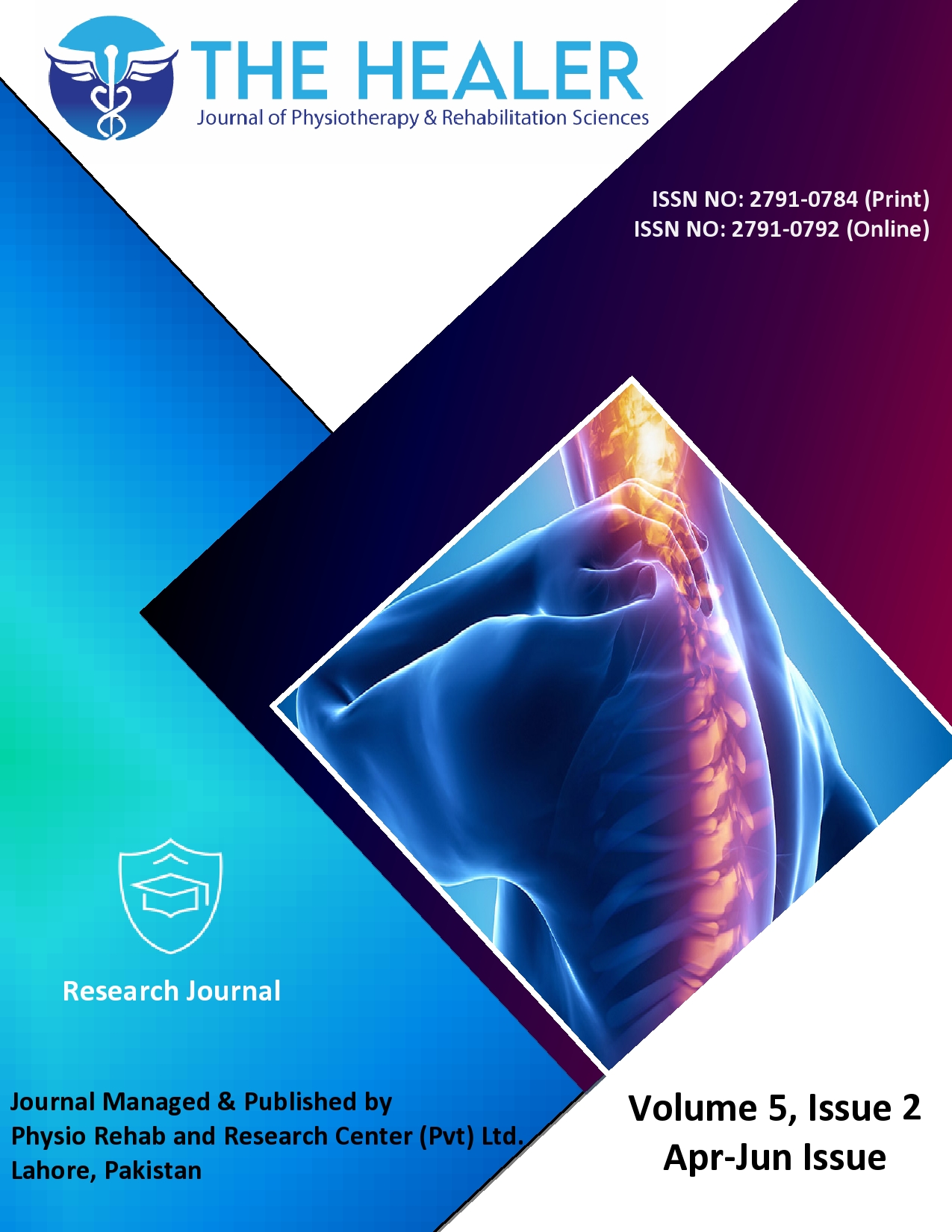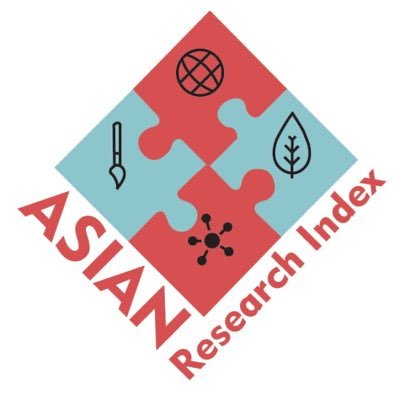Prevalence of Plantar Fasciitis and Its Association with Body Mass Index Among Taekwondo Players
DOI:
https://doi.org/10.55735/d2mzyf63Keywords:
Body mass index , Heel pain , Plantar fasciitis , Taekwondo players , Windlass testAbstract
Background: Plantar fasciitis is a common musculoskeletal condition and a leading cause of heel pain in adults, affecting over one million individuals annually. Although self-limiting in nature, it often interferes with daily activities and athletic performance. It affects both sedentary and active populations, with risk factors including obesity, prolonged standing, running, and foot pronation. Objective: To determine the prevalence of plantar fasciitis and its association with body mass index in Taekwondo players. Methodology: A cross-sectional survey was conducted among 314 registered Taekwondo players aged 12–50 years, selected using convenience sampling. Participants were recruited from registered clubs affiliated with the Pakistan Taekwondo Association, covering all provinces and the federal capital. Data was collected using a structured Google Docs questionnaire in collaboration with the Secretary General of the Pakistan Taekwondo Federation, which included demographic details, informed consent, and self-reported height and weight to calculate BMI. The Windlass test was used as the primary clinical assessment for plantar fasciitis. Data was analyzed using IBM SPSS version 25, and the frequency and percentages were calculated. The association between plantar fasciitis and body mass index category was evaluated using the Chi-square test (p<0.05 considered significant). Results: Out of 314 participants, 72 (22.9%) tested positive for plantar fasciitis using the Windlass test. Heel pain was most prevalent in the 16–25 age group (14.6%) and among those with a normal body mass index (21%). However, statistical analysis revealed no significant association between heel pain and either age group (χ²=3.12, p=0.53) or body mass index category (χ²=6.50, p=0.36). Conclusion: It concluded a notable prevalence of plantar fasciitis among Taekwondo players in Pakistan, especially in younger individuals and those with normal body mass index. However, no significant associations were found between heel pain and age or body mass index. Further research is needed to explore other contributing factors such as biomechanics, training load, and footwear.
Downloads
References
1. Agyekum EK, Ma K. Heel pain: A systematic review. Chinese Journal of Traumatology 2015; 18(03): 164–9.
https://doi.org/10.1016/j.cjtee.2015.03.002
2. Schwartz EN, Su J. Plantar fasciitis: a concise review. The Permanente Journal 2014; 18(1): e105.
https://doi.org/10.7812/TPP/13-113
3. Altarriba-Bartes A, Drobnic F, Til L, Malliaropoulos N, Montoro JB, Irurtia A. Epidemiology of injuries in elite taekwondo athletes: two Olympic periods cross-sectional retrospective study. BMJ open 2014; 4(2): e004605.
https://doi.org/10.1136/bmjopen-2013-004605
4. Radwan A, Wyland M, Applequist L, Bolowsky E, Klingensmith H, Virag I. Ultrasonography, an effective tool in diagnosing plantar fasciitis: a systematic review of diagnostic trials. International Journal of Sports Physical Therapy 2016; 11(5): 663.
5. Khan Y, Khan A, Iqbal M, Shah D, Ahmad F. Prevalence of Plantar fasciitis in academic physical therapists of KMU-affiliated Institutes and clinical physical therapists in tertiary care hospitals: A cross-sectional study. National Journal of Life and Health Sciences 2023; 2(1): 27–30.
https://doi.org/10.62746/njlhs.v2n1.15
6. Goff JD, Crawford R. Diagnosis and treatment of plantar fasciitis. American Family Physician 2011; 84(6): 676–82.
7. Kim D-Y, Seo B-D, Choi P-A. Influence of taekwondo as security martial arts training on anaerobic threshold, cardiorespiratory fitness, and blood lactate recovery. Journal of Physical Therapy Science 2014; 26(4): 471–4.
https://doi.org/10.1589/jpts.26.471
8. Singh A, Boyat A, Sandhu J. Effect of a 6-week plyometric training program on agility, vertical jump height, and peak torque ratio of Indian Taekwondo players. Sports and Exercise Medicine - Open Journal 2015; 1(2): 42–6.
https://doi.org/10.17140/SEMOJ-1-107
9. Kazemi M, Shearer H, Choung YS. Pre-competition habits and injuries in Taekwondo athletes. BMC Musculoskeletal Disorders 2005; 6(1): 1–9.
https://doi.org/10.1186/1471-2474-6-26
10. McNair PJ, Harry Prapavessis H. Normative data of vertical ground reaction forces during landing from a jump. Journal of Science and Medicine in Sport 1999; 2(1): 86-88.
https://doi.org/10.1016/S1440-2440(99)80187-X
11. Voinea A. Specific injuries in combat sports. The Bucharest University of Economic Studies JEL Classification 2015; 30(40): 190.
12. Hamstra-Wright KL, Huxel Bliven KC, Bay RC, Aydemir B. Risk factors for plantar fasciitis in physically active individuals: a systematic review and meta-analysis. Sports Health 2021; 13(3): 296–303.
https://doi.org/10.1177/1941738120970976
13. Plesek J, Hamill J, Burda M, et al. Running Distance and Biomechanical Risk Factors for Plantar Fasciitis: A 1-yr Prospective 4HAIE Cohort Study. Medicine and Science in Sports and Exercise 2025; 57(4): 756-766.
https://doi.org/10.1249/MSS.0000000000003617
14. Abidin SZU, Haneef K, Malik NR, Mashal M, Zeb A, Rahman MU. Prevalence and associated risk factors for Plantar Fasciitis among security forces personnel in Peshawar. Annals of Allied Health Sciences 2019; 5(2): 20–3.
15. Lystad RP, Pollard H, Graham PL. Epidemiology of injuries in competition taekwondo: A meta-analysis of observational studies. Journal of Science and Medicine in Sport 2009; 12(6): 614–21.
https://doi.org/10.1016/j.jsams.2008.09.013
16. Sikander MS, Shinwari NU, Shah J, Atif M, Jan SIU, Naz M. Prevalence and Association of Risk Factors for Plantar Fasciitis Among Nurses in Government Tertiary Care Hospitals of Peshawar. Journal of Health and Rehabilitation Research 2024; 4(2): 1623–8.
https://doi.org/10.61919/jhrr.v4i2.1157
17. Lee W, Metgud N, Moore M. Association of obesity and plantar fasciitis in patients with plantar heel spurs. Foot & Ankle Orthopaedics 2023; 8(4): 24730114231213625.
https://doi.org/10.1177/24730114231213625
18. Al-Ansary MY, Rahman MH, Kakuli SA, Kabir MF, Ali ME. Association between BMI and plantar fasciitis among hospital staff in a selected hospital of Dhaka city. International Journal of Community Medicine and Public Health 2023; 10(4): 1298.
https://doi.org/10.18203/2394-6040.ijcmph20230903
19. Khired Z, Najmi MH, Akkur AA, et al. The prevalence and risk factors of plantar fasciitis amongst the population of Jazan. Cureus 2022; 14(9).
https://doi.org/10.7759/cureus.29434
20. Beeson P. Plantar fasciopathy: revisiting the risk factors. Foot and ankle surgery: Official Journal of the European Society of Foot and Ankle Surgeons 2014; 20(3): 160–5.

Downloads
Published
License
Copyright (c) 2025 The Healer Journal of Physiotherapy and Rehabilitation Sciences

This work is licensed under a Creative Commons Attribution 4.0 International License.














